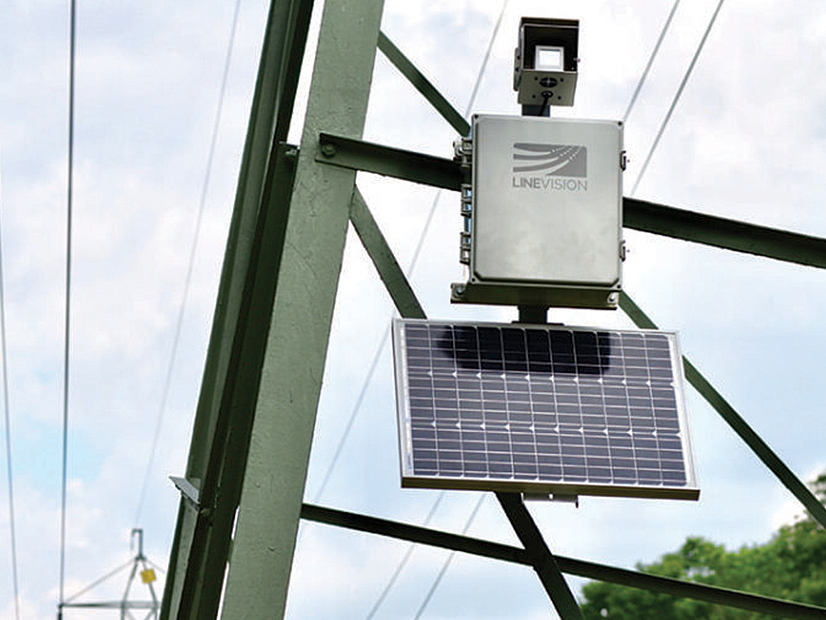
FERC on Thursday ordered transmission providers to end the use of static line ratings in evaluating near-term transmission service, a move the commission said will improve accuracy and transparency and increase utilization of the grid (RM20-16, Order 881).
The order requires transmission providers to employ ambient-adjusted ratings (AARs) for short-term transmission requests — 10 days or less — for all lines that are impacted by air temperature. Seasonal ratings will be required for long-term service.
The commission said the current practice — in which line ratings are typically based on conservative assumptions about worst-case, long-term air temperature and other weather conditions — has caused underutilization of available transmission capacity.
“This is a pretty big deal,” Chairman Richard Glick said at the commission’s open meeting. “We’ve spent a lot of time over the last several months talking about the need for substantial investments in new transmission capacity, and there is a significant need for these investments. But at the same time, we need to squeeze more out of the existing grid.”
FERC opened the docket with a Notice of Proposed Rulemaking last year. (See FERC Proposes Requiring Variable Tx Line Ratings.)
The final rule did not mandate the use of dynamic line ratings (DLRs), which the commission said should be more accurate than AARs by incorporating not only forecasted temperatures, but also other weather conditions such as wind, cloud cover, solar irradiance intensity, precipitation, and line conditions such as tension or sag. DLRs also can provide situational awareness, alerting operators if a line is over its capacity.
But the order does require that organized market operators allow transmission owners that would like to use DLRs the ability to do so. FERC also ordered RTOs and ISOs to create systems and procedures to allow transmission owners to electronically update transmission line readings at least hourly.
The order also rejected the NOPR’s proposal to “stagger” implementation of AARs on historically congested lines first, followed by all lines. The order requires transmission providers to submit compliance filings within 120 days of the rule’s publication in the Federal Register and to implement the rules within three years after that.
Worst-case Assumption
In a presentation to the commission, Dillon Kolkmann of the Office of Energy Policy and Innovation, said that transmission line ratings are often based on worst-case assumptions, for example, a hot summer day. “Atmosphere and weather conditions vary day to day and hour to hour. But seasonal or static ratings are typically updated only when equipment is changed or weather assumptions are revised,” he said.
As a result, such ratings often result in less transfer capability than the system can actually provide, resulting in unnecessary congestion costs, curtailments and redispatch orders.
Kolkmann said seasonal and static ratings may also overstate near-term transfer capability, creating reliability risks.
Glick said the evidence gathered to date was insufficient to determine “the incremental benefits, costs and risks associated with dynamic line ratings.” The commission opened a new proceeding (AD22-5) to build the evidentiary record further.
Commissioner Allison Clements said she hoped that new rules also would result in more accurate signals about where investments in new transmission facilities are needed.
“I want to stress that this rule is not [the end of] efforts to improve existing system efficiency, but instead represents an important first step,” she said. “The record in this proceeding does demonstrate that dynamic line ratings may provide even more accurate line ratings than ambient adjusted ratings, and therefore even greater reliability and economic benefits to consumers. In my mind, these are benefits we can’t afford to leave on the table.”
How Much More?
LineVision Inc., which provides transmission technology for AARs and DLR, claims its solutions can “unlock up to 40% additional capacity.”
The Electric Power Research Institute said that DLR is more costly than AARs because it requires “placing sensors in remote locations, ensuring the cyber security of sensors, and various additional costs.”
AARs are widely used in PJM. The RTO told the commission that AARs provide “significant operational value [and] allows for the realization of additional incremental capability on the system.”
PJM is conducting DLR pilot programs with PPL and AEP. In a study of a hypothetical installation on one of its most congested lines, PJM said DLRs could provide a payback of the estimated $500,000 equipment installation cost in two months through reduced congestion payments.
In its comments, the Electric Power Supply Association was generally supportive of moving to DLR but warned it “could have some unintended impacts with respect to day-ahead and real-time price convergence.
“While such an impact ultimately may not be negative or significant, it is nonetheless important to ensure that the RTOs consider the issue,” EPSA said.
ITC Holdings told the commission in April that “AARs should not be seen as a panacea to the needs of the transmission system.”
The company said it agreed with the Organization of MISO States (OMS) that AARs “should not be implemented on facilities where it is not economic or reliable to do so.
“A collaborative approach among stakeholders will allow the identification of the facilities that will provide the most benefit to electric customers from the use of AARs,” ITC said. “This is of particular importance in MISO where the Transmission Owners have worked over more than the past 18 months to develop an AAR conceptual framework to evaluate candidate facilities and begin the process of program development.”
